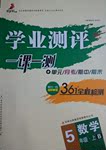题目内容
-Rhoda looks hot and dry.
-So ________ you if you had a high fever.
A.do
B.will
C.are
D.would

 学业测评一课一测系列答案
学业测评一课一测系列答案You’re rushing to work and a man ahead of you collapses on the sidewalk. Do you stop to help? In a study of by-standers, it was found that some people avert their gaze and keep on walking rather than stop and get involved.
“There is a tendency to decide that no action is needed.” says a psychologist. “The first thoughts that pop into your mind often keep you from offering help. In order to take action, you have to work against them.” Here are some common thoughts that might prevent you from helping.
● Why should I be the one? I’m probably not the most competent(有能力的) person in this crowd. You might think someone older or with more medical knowledge should offer assistance.
● What if he doesn’t really need my help? The fear of embarrassment is powerful; no one wants to risk looking foolish in front of others.
● No one else looks concerned- this must not be a problem. We can follow the people around us, but most people tend to hold back their emotions in public.
“If you spot trouble and find yourself explaining inaction, force yourself to stop and evaluate the situation instead of walking on,” says the psychologist. “Then retry to involve other people; you don’t have to take on the entire responsibility of being helpful. Sometimes it’s just a matter of turning to the person next to you and saying, ‘It looks like we should do something.’ Or asking someone if an ambulance has been called and, if not, to call for one. Once you take action, most people will follow you.”
【小题1】Which is NOT the common thought that stops you from helping others?
| A.I’m not the very person capable of setting the problem. |
| B.It looks like we should do something. |
| C.It must not be a problem as no one else is concerned. |
| D.He doesn’t really need my help. |
| A.They will call for help and then walk away. |
| B.They will stop and offer help. |
| C.They will turn away their eyes and go on walking. |
| D.They will laugh at him. |
| A.we should call the ambulance as soon as we can. |
| B.we should take on the whole responsibility and do something alone. |
| C.we should stop and evaluate the situation and try to make other people follow. |
| D.we should turn to other people and ask them to take on the responsibility |
| A.ask others for help and call the police |
| B.get along well with the passers-by who spot the trouble |
| C.go directly to the police station |
| D.work against the first thoughts that prevent you offering help |
| A.to give others a hand |
| B.to be more competent |
| C.not to risk looking foolish |
| D.to stop and evaluate the situation |
[1] Look at the center circles of Diagram A and Diagram B. Which of the centre circles looks larger? 
[2] Take a first look and you probably think that the centre circle in Diagram A is smaller than that in Diagram B. In fact, they are exactly the same size.
[3]Then look at the picture on the right. What do you see? A vase? Or two faces? Does the picture change quickly from one to the other again and again? Maybe or maybe not, but you can see them at the same time. 
[4]“What’s happening? Is something wrong with my eyes?” You may wonder at what you see. Don’t worry. Here is how it goes:
[5]When we look at things, our eyes send messages to our brains and then our brains interpret the information. However, sometimes our brains interpret the received information in a wrong way. It seems that our eyes are playing a joke on us. This often happens and we call it “Visual illusion(幻觉)”. 
[6] Movie makers often make use of illusions. They make the objects around actors much smaller or bigger than usual. This makes us believe that the actors are much larger or smaller than they usually are. The movies Jurassic Park and Honey J shrunk the kids just make use of illusions.
【小题1】In which column of a magazine can you read the above text?
| A.Culture. | B.Science. | C.Humour. | D.Education. |
| A.something is wrong with our eyes |
| B.the two circles are not of the same size |
| C.our brains interpret the information wrongly |
| D.pictures change quickly from one to the other |
A. The second one. B. The third one. C. The sixth one.. D. The fifth one
【小题4】What’s the right order according to the text?
a. We look at things with our eyes. b. Our brains interpret the messages.
c. Our brains tell us what we have seen. d. Our eyes send messages to our brains.
A. a-d-b-c B c-a-b-d C a-c-d-b D. b-e-a-d